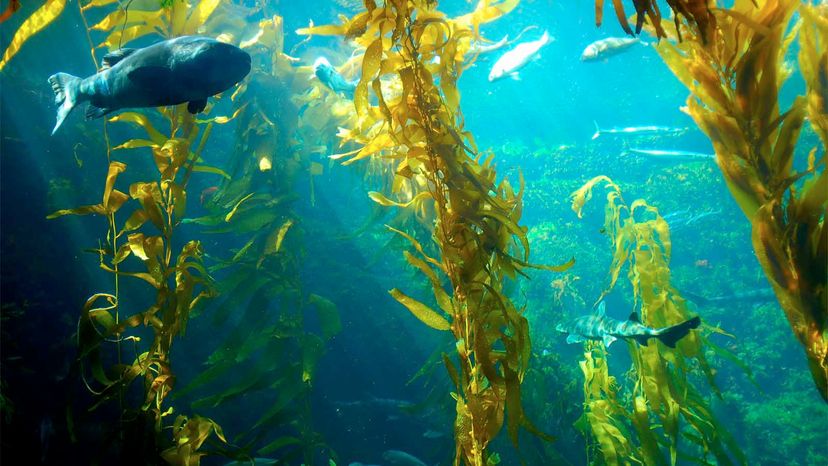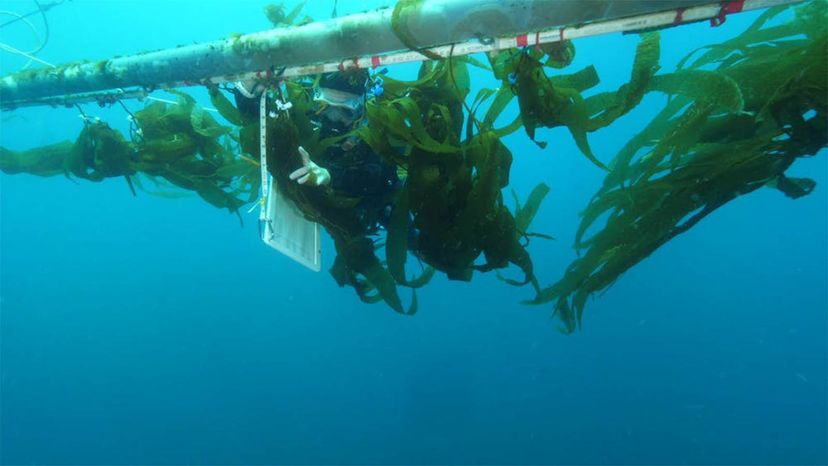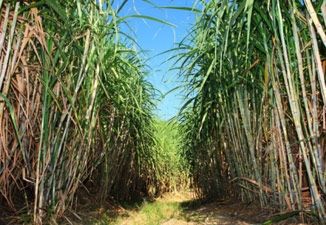
Giant kelp, the world's largest species of marine algae, is an attractive source for making biofuels. In a recent study, we tested a novel strategy for growing kelp that could make it possible to produce it continuously on a large scale. The key idea is moving kelp stocks daily up to near-surface waters for sunlight and down to darker waters for nutrients.
Unlike today's energy crops, such as corn and soybeans, growing kelp doesn't require land, fresh water or fertilizer. And giant kelp can grow more than a foot per day under ideal conditions.
Advertisement
Kelp typically grows in shallow zones near the coast and thrives only where sunlight and nutrients are both plentiful. There's the challenge: The ocean's sunlit layer extends down about 665 feet (200 meters) or less below the surface, but this zone often doesn't contain enough nutrients to support kelp growth.
Much of the open ocean surface is nutrient-poor year-round. In coastal areas, upwelling — deep water rising to the surface, bringing nutrients — is seasonal. Deeper waters, on the other hand, are rich in nutrients but lack sunlight.
Our study demonstrated that kelp withstood daily changes in water pressure as we cycled it between depths of 30 feet (9 meters) and 262 feet (80 meters). Our cultivated kelp acquired enough nutrients from the deeper, dark environment to generate four times more growth than kelp that we transplanted to a native coastal kelp habitat.
Advertisement


